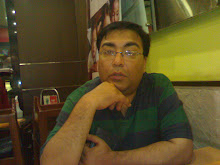Gulmarg
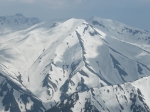 On a bright morning full of promise of a glorious day ahead, we bid our hosts Bilal Hakroo and his father adieu and headed towards Gulmarg, a hill resort approx. 52 kms from Srinagar. We drove in the valley for about 40 kms to Tangmarg and than found ourselves winding our way through a beautiful pine and fir forest. As we drove up, magnificent vistas of snow covered mountains loomed before us and the drive soon took on a dream like quality.
On a bright morning full of promise of a glorious day ahead, we bid our hosts Bilal Hakroo and his father adieu and headed towards Gulmarg, a hill resort approx. 52 kms from Srinagar. We drove in the valley for about 40 kms to Tangmarg and than found ourselves winding our way through a beautiful pine and fir forest. As we drove up, magnificent vistas of snow covered mountains loomed before us and the drive soon took on a dream like quality.
In Gulmarg, we found our hotel amidst rolling meadows and dense woods of fir and pine. The weather in Gulmarg we discovered is very fickle. By the time we settled in, it had turned chilly with clouds hanging low and a drizzle making us stay indoors. Later in the evening we went horse riding on the meadows. Chatting with the locals, we discovered that in the winters, these meadows turn into fabulous ski slopes for, which Gulmarg is famous the world over.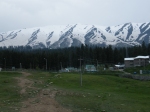
The next day we set off on a walk in the woods and later rode up to Khilanmarg. From Khilanmarg, on a clear day one can see snow covered peaks in a huge 360 degrees ring. The distant hills look almost etheral, floating on air. Gulmarg’s greatest attraction these days is a Gondola ride, a ropeway linking Gulmarg to the Kongdoori Hill in two stages. The first stage transfers from the Gulmarg resort at 2,600 m (8,530 ft) to Kongdoori Station. The second stage of the ropeway, which has 36 cabins and 18 towers, takes skiers to a height of 3,747 m (12,293 ft) on Kongdoori Mountain, a shoulder of nearby Afarwat Peak 4,200 m (13,780 ft)). We rode on our horses till the Kongdoori Station through lovely woods and than boarded the Gondola for the stage 2.
The Gondola ride is an amazing experience. As the Gondola moved out from the station the snow covered mountain fell away beneath us. We slid by quietly on the rope, an elaborate system of metal ropes and pulleys kept propelling us higher and higher. The Gondola eventually disgorged us at the Kongdoori peak. Stepping out of the station we were mesmerised by the expanse of soft snow, stretching over mountain ranges as far back as the eye could see. We walked on the soft snow, sinking into it to our knees and keeling over and than pulling ourselves out to stumble on for a little more. A local Kashmiri youth informed us that right behind the snow covered hill in front of us is the Line of Control, the de-facto Indian border with Pakistan. The Indian Army patrols these mountains round the clock and the Gondola is also used to ferry supplies to them. 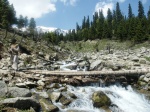
On our way back, we rode the Gondola right down to Gulmarg. It was indeed one of the most memorable day in our sojourn, a day one is unlikely to forget in a long long time.
Sonamarg
The drive to Sonamarg is more enchanting than the ‘golden meadows’. The river Sindhu (not to be confused with Indus) rumbles along the road all the way. The road too surprisingly does not wind its way up, it gently slopes up along the fast flowing river. We drove to Sonamarg on a bright sunny day through the Kashmiri countryside, along the river. Sonamarg is breathtakingly beautiful, with huge snow covered mountains, slopes densely covered with fir, pine and birch trees and the river Sindh flowing by. Nearby is the Thajwas glacier, accessible on foot or on ponies. As soon as we drove to the village square we were virtually assaulted by a crowd of pony owners inviting us to go to the glacier. As we were making up our minds, we spied an inflatable raft. Enquiries revealed that we could go river rafting in the Sindh. We immediately signed up and drove a few kilometres further up and on the banks of the Sindh.
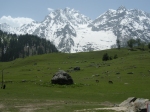 River rafting on the Sindh in grade 2 and 3 rapids amidst huge mountains on either side is a uniquely exhilarating experience. Off we went on a 3 kms stretch, with expert guides directing the raft. The river flowed fast and furious and the water was ice cold. We shouted and screamed as we plunged into vicious rapids and came out drenched to the skin. Being on the river and flowing with it creates an illusion, where with a start one realises that the mountains too seem to be moving with the river!
River rafting on the Sindh in grade 2 and 3 rapids amidst huge mountains on either side is a uniquely exhilarating experience. Off we went on a 3 kms stretch, with expert guides directing the raft. The river flowed fast and furious and the water was ice cold. We shouted and screamed as we plunged into vicious rapids and came out drenched to the skin. Being on the river and flowing with it creates an illusion, where with a start one realises that the mountains too seem to be moving with the river! 
We dried ourselves on the bank of the river in the hot sun that beat down on us. Driving back we took a detour and went towards Sumbal and than crossed Jhelum, driving along it to reach Srinagar by the nightfall.

Pahalgam
Kashmir is perhaps one of those places, where getting lost on the roads is a pleasant diversion. We set off from Srinagar on our way to Pahalgam and turned left towards Bijbihara. Soon we found ourselves in a village, where we asked for directions and headed on a narrow road, which soon turned into a dirt track. We went past tiny somnolent villages set in the valley amongst beautiful hills. Eventually we came across an old lady, working in the fields alongside, who told us to go back and take a right turn Soon we crossed the Lidder and found the highway to Pahalgam, with the river flowing besides us.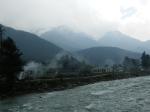
Pahalgam is located on the junction of the Aru and Sheshnag rivers, which form the Lidder. There is something completely enchanting about Pahalgam, which is so hard to define. If ever, one was to conjure up a perfectly beautiful landscape, than it has to be in Pahalgam. The snow covered peaks, the river, the forests, everything in Pahalgam is magical. In Pahalgam we just sat around the river and enjoyed the natural beauty, so generously spread around us. We went for walks and roamed the markets, buying gifts and souvenirs for family and friends.
Pahalgam was our last port of call in Kashmir during this sojourn. After having spent these days in the valley, I can only say that I can not agree more with emperor Jehangir. Even 500 years on, if there is a paradise on earth, it is here in Kashmir.
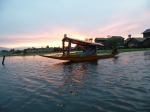 The Mughal emperor Jehangir loved Kashmir and traveled often from his capital of Agra in the North Indian planes all the way to the valley beautiful. So much was he in the thrall of the valley that he called it the ‘paradise on Earth’.
The Mughal emperor Jehangir loved Kashmir and traveled often from his capital of Agra in the North Indian planes all the way to the valley beautiful. So much was he in the thrall of the valley that he called it the ‘paradise on Earth’.
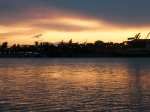

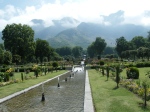 The Mughal Gardens
The Mughal Gardens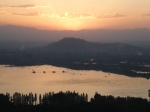 Pari Mahal
Pari Mahal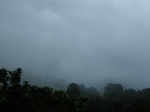 This is a weekend break, which we almost did not have.
This is a weekend break, which we almost did not have.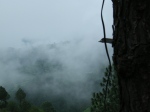

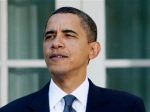 Had Alfred Noble been alive today, he would indeed be a very sad man. The wise men who decide the winner of the peace prize named in his memory have done a great disservice to him by honouring Barack Obama. Strange as it may sound they have also done great injustice to Mr. Obama by bestowing upon him a prize that he does not truly deserve, certainly not as yet.
Had Alfred Noble been alive today, he would indeed be a very sad man. The wise men who decide the winner of the peace prize named in his memory have done a great disservice to him by honouring Barack Obama. Strange as it may sound they have also done great injustice to Mr. Obama by bestowing upon him a prize that he does not truly deserve, certainly not as yet. These days I am enjoying James Herriot’s omnibus collection ‘All Creatures Great and Small’. I must confess I am great fan of James Herriot’s writing and have read most of his books including the other omnibus collections ‘All Things Bright and Beautiful’ and ‘All things Wise and Wonderful’. A few years ago, I also came across the authorised biography of James Herriot (by his son Jim Wight), in a London bookstore and without much ado picked it up.
These days I am enjoying James Herriot’s omnibus collection ‘All Creatures Great and Small’. I must confess I am great fan of James Herriot’s writing and have read most of his books including the other omnibus collections ‘All Things Bright and Beautiful’ and ‘All things Wise and Wonderful’. A few years ago, I also came across the authorised biography of James Herriot (by his son Jim Wight), in a London bookstore and without much ado picked it up.